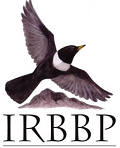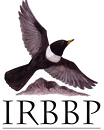
Nightjar
Caprimulgus europaeus
Tuirne lín
Status All Ireland: Breeding (Republic only)
Population estimate all Ireland: Unknown
Trend (12 years): Decline
Trend (40 years): Decline
Survey timing: May to August
Habitat: Woodland / heath
Occurrence: Sparsely distributed in southern and eastern counties – Wicklow, Wexford, Waterford, Tipperary, Cork. Formerly bred in many counties throughout Ireland, so there is possibility of occasional breeding attempts outside the above counties.
Habitat preference (simple description of preferred nesting habitat): Favours clearfell areas, usually in conifers (often Scots pine), where there is a good litter on the ground (leaves, pine needles, branches, logs) with some sparse field layer vegetation and bare patches. The nest is on the ground. Prefers dry sandy soil. Needs some tall song posts, typically isolated, fairly bare trees in the clearfell area or at its edge. Also nests in heather growing in firebreaks in forestry.
Preferred ways to establish breeding status: A scarce summer migrant – one of the latest to arrive. No point looking for it before May. Because of its specific habitat requirements, it is best to focus on clear-felled areas in coniferous forests, especially where soil is dry or sandy and where there is good amount of leaf litter and branches with some bare patches on the ground. Nightjars are entirely nocturnal. Male starts its distinctive churring song at dusk, usually perched along a horizontal branch of a prominent tree or stump in or near the clearing. It may fly to other song posts or display over the territory wing clapping and uttering a “ke-wick” call. Worth watching this activity closely as female may join male in flight. Failing light and the fact that singing / displaying tends to ease off after 30 mins or so, make the window of opportunity very tight – you usually only get one stab at one site per night. Very difficult to prove breeding, unless in exceptional circumstances an adult is seen flying to the ground, to the same spot on more than one occasion. Very difficult species to survey – ensure familiarity with songs and calls.


